Key Takeaways
- Cockroaches die on their backs due to their anatomy.
- Insecticides cause nerve failure, leading to flipping over.
- Smooth surfaces prevent them from regaining footing.
- Old age, dehydration, and starvation contribute to this phenomenon.
- Finding dead roaches may indicate an infestation or pest control success.
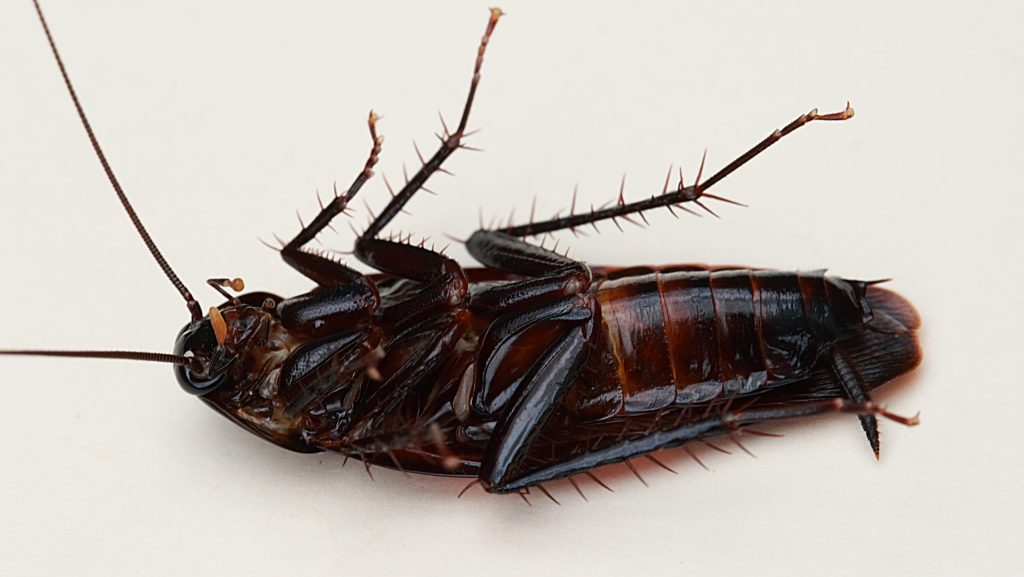 If you’ve ever come across a dead cockroach lying on its back, legs curled up in the air, you may have wondered why this phenomenon is so common. Unlike other pests that might die in various positions, cockroaches seem to have a signature death pose. But what causes this? Is it natural, or is there a deeper scientific reason behind it?
In this article, we’ll explore the scientific, biological, and environmental factors that cause cockroaches to die on their backs. We’ll also discuss what it means for your home, how to clean up dead roaches safely, and how to prevent infestations.
If you’ve ever come across a dead cockroach lying on its back, legs curled up in the air, you may have wondered why this phenomenon is so common. Unlike other pests that might die in various positions, cockroaches seem to have a signature death pose. But what causes this? Is it natural, or is there a deeper scientific reason behind it?
In this article, we’ll explore the scientific, biological, and environmental factors that cause cockroaches to die on their backs. We’ll also discuss what it means for your home, how to clean up dead roaches safely, and how to prevent infestations.
Why Do Cockroaches Flip Over When They Die?
There are multiple reasons why cockroaches die belly-up. Some are biological, while others depend on environmental conditions.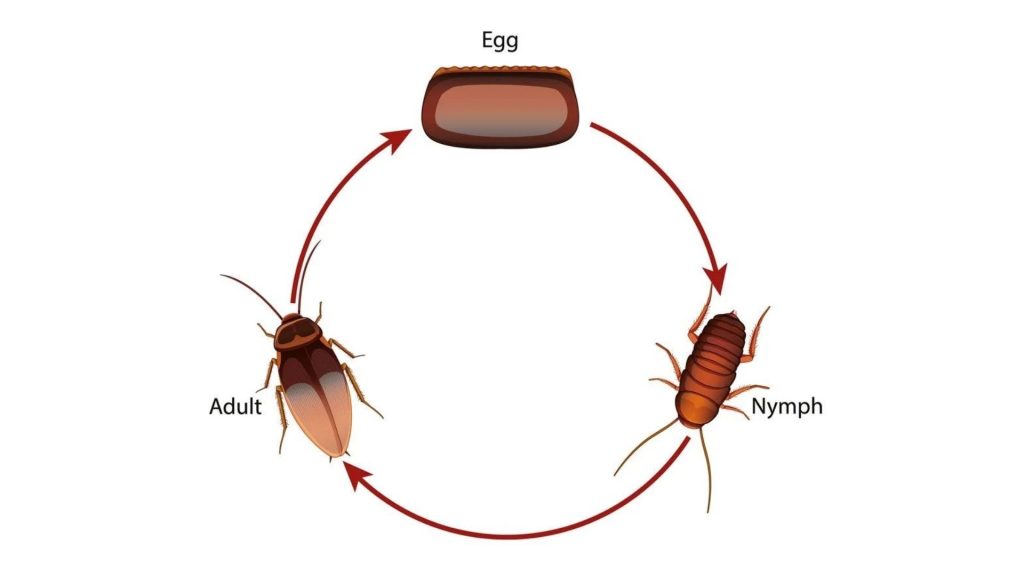

Not getting a solution?
Get your free pest control estimate today!1. Cockroach Anatomy: A Top-Heavy Body
Cockroaches have a high center of gravity due to their hard exoskeleton and body shape. Their legs are long and spindly, positioned underneath their body rather than at the sides. This means that when a roach loses motor control (such as in death), its legs contract inward, causing it to topple onto its back. Think of a canoe with too much weight on top—once it starts tipping, it becomes difficult to balance. Similarly, cockroaches are prone to rolling onto their backs if they become immobile.2. Muscle Paralysis and Nerve Failure
When a cockroach is poisoned by insecticides, it undergoes severe muscle spasms and convulsions. These spasms often make the cockroach flip onto its back before its body stiffens. Insecticides that affect the nervous system, such as neurotoxins, cause the legs to stiffen and tuck under the body, preventing the roach from flipping back over.3. Environmental Factors: Smooth Surfaces
In their natural habitat (leaf litter, rocks, soil), cockroaches have plenty of objects to grip onto. However, in human homes, they often scurry across smooth surfaces like tile, hardwood floors, and countertops. When a cockroach falls upside down on these flat surfaces, it has little traction to push itself back over, especially if it is weak or dying.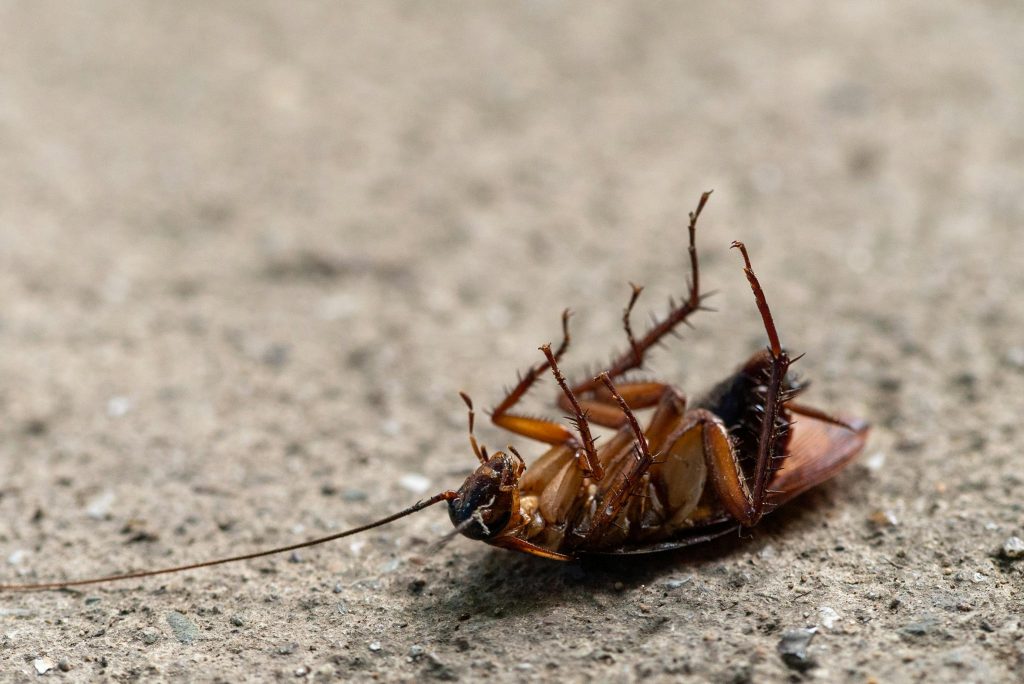
4. Old Age, Dehydration, or Starvation
Cockroaches can die naturally from dehydration, starvation, or old age. When they grow too weak to move properly, they may accidentally fall onto their backs and lack the energy to right themselves. Since their legs tuck inwards when they die, they remain in this position until they fully expire.5. Lack of Predators in Homes
In the wild, a flipped-over roach is an easy meal for predators. However, inside a home, there are usually no natural predators to intervene. This means that when a roach dies in your kitchen or bathroom, it remains in that position until someone finds it.What Does Finding a Dead Roach on Its Back Mean
Spotting a dead cockroach in your home is more than just a nuisance—it could be a sign of an infestation or ongoing pest control efforts.What Finding a Dead Roach Indicates
-
It could signal a hidden infestation.
-
Pest control treatments may be working.
-
Poor sanitation may be attracting cockroaches.
How to Safely Dispose of Dead Cockroaches
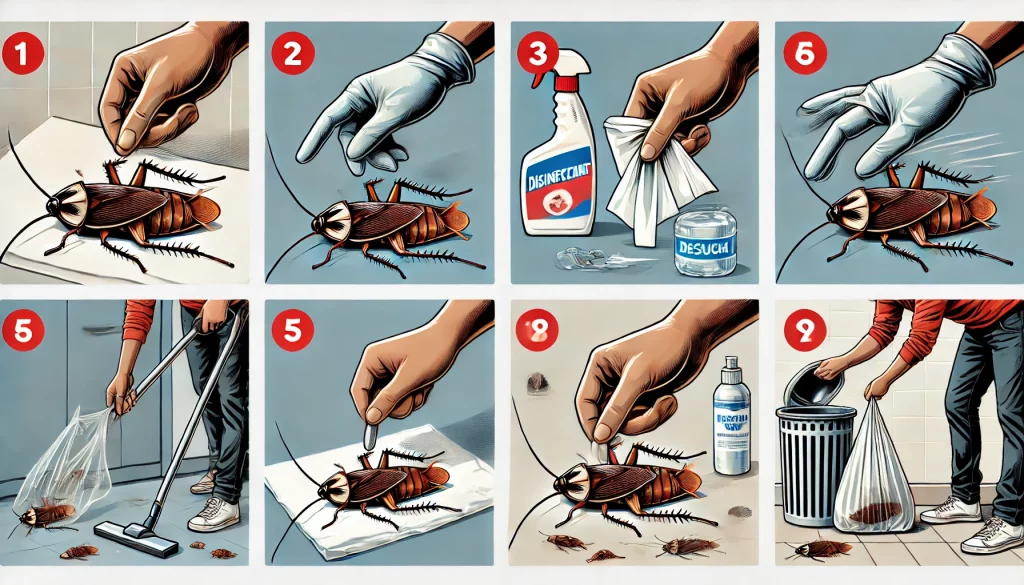
Steps for Safe Roach Disposal
-
Do not touch it with bare hands; use gloves or tissue paper.
-
Ensure it’s actually dead, as some roaches may “play dead.”
-
Seal it in a plastic bag before discarding it.
-
Disinfect the area where it was found.
-
Vacuum and check for signs of infestation.
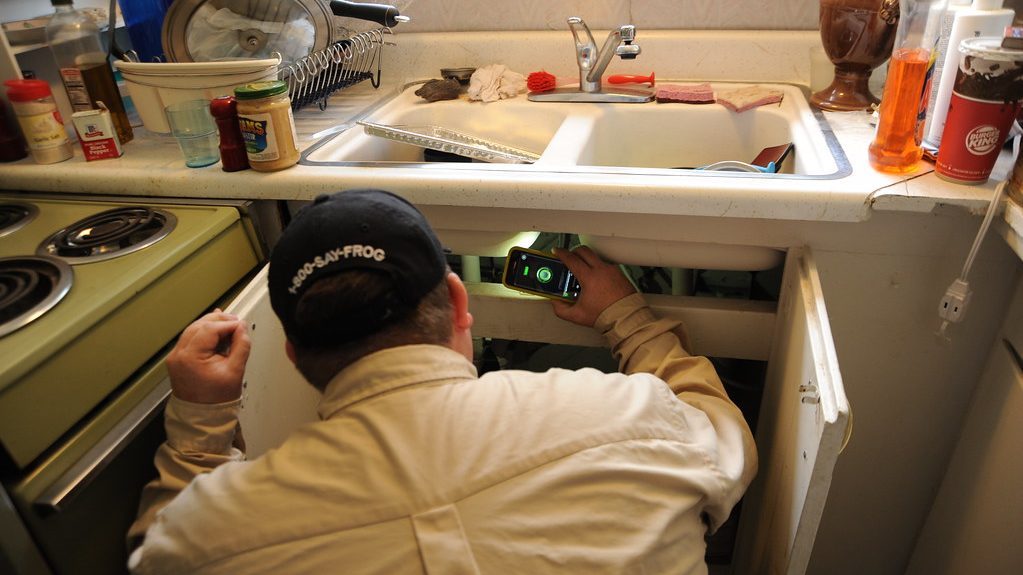
How to Prevent Cockroach Infestations
To reduce the chances of finding dead cockroaches in your home, take proactive pest control measures:Eliminate Food Sources
-
Store food in air-tight containers.
-
Take out the trash regularly.
-
Clean up crumbs and spills immediately.
Eliminate Water Sources
-
Keep sinks dry overnight.
-
Reduce humidity with dehumidifiers.
-
Fix leaky pipes and faucets.
Seal Entry Points
-
Use caulk to seal cracks and gaps in walls.
-
Install door sweeps to block roaches from entering.
-
Repair window screens to keep them out.
Use Baits and Traps
-
Place cockroach baits in hidden areas.
-
Set sticky traps along baseboards and under appliances.
If you feel the cockroach infestation has gotten out of control, it is best to contact pest control professionals. Our team offers customized solutions to effectively protect your home. Prevention techniques may not always be sufficient if you’re already facing a cockroach infestation. Our pest control experts provide tailored solutions to eliminate and safeguard your home.





